In a nutshell
Many people wonder about the differences between yellow moong dal vs mung beans. In essence, mung beans are the whole beans, and yellow moong dal is the de-husked and split version (cut into halves) of mung beans. In between these two, you'll also have the split moong dal, which is the mung beans split into halves with the skin intact.

Jump to:
- In a nutshell
- Is dal the same as lentils
- What are mung beans
- What is split moong dal
- What is yellow moong dal
- Health benefits of yellow moong dal or mung beans
- How to use mung beans
- How to use yellow moong dal
- Mung beans vs yellow moong dal table
- Where to buy mung beans or yellow moong dal
- How to store mung beans and yellow moong dal
- A final note
Is dal the same as lentils
Before we dive into yellow moong dal vs mung beans and its plethora of health benefits, let's brush on what dal is. Yes, dals and lentils are one and the same, and the terms can be used interchangeably. In the West, dals are more commonly referred to as lentils, and in India and some other South Asian countries, they're referred to as dal, dahl, or daal.
Moong dal belongs to the legume family and dal can refer both to the raw lentils or the finished cooked lentil dish.
Uncooked lentils = dal
Cooked lentils = also dal
It can be a bit confusing at first, but depending on the context it should be fairly easy what people or recipes are referring to.
What are mung beans
Mung beans (vigna radiata) are native to India and belong to the legume family. Also known as whole green moong dal or whole mung beans, the whole dals are small, olive-green, and oval-shaped. Because they're so tiny, they do not require any soaking before cooking, unless over 1 year old, because older beans take longer to cook.
Whole green mung beans cook very quickly. The average cook time is about 25 minutes total on the stovetop, and 5 minutes if using a pressure cooker or Instant pot. However, there's no harm in soaking them; this could reduce their cooking time by 5 minutes.
Mung beans = green moong dal = whole green gram
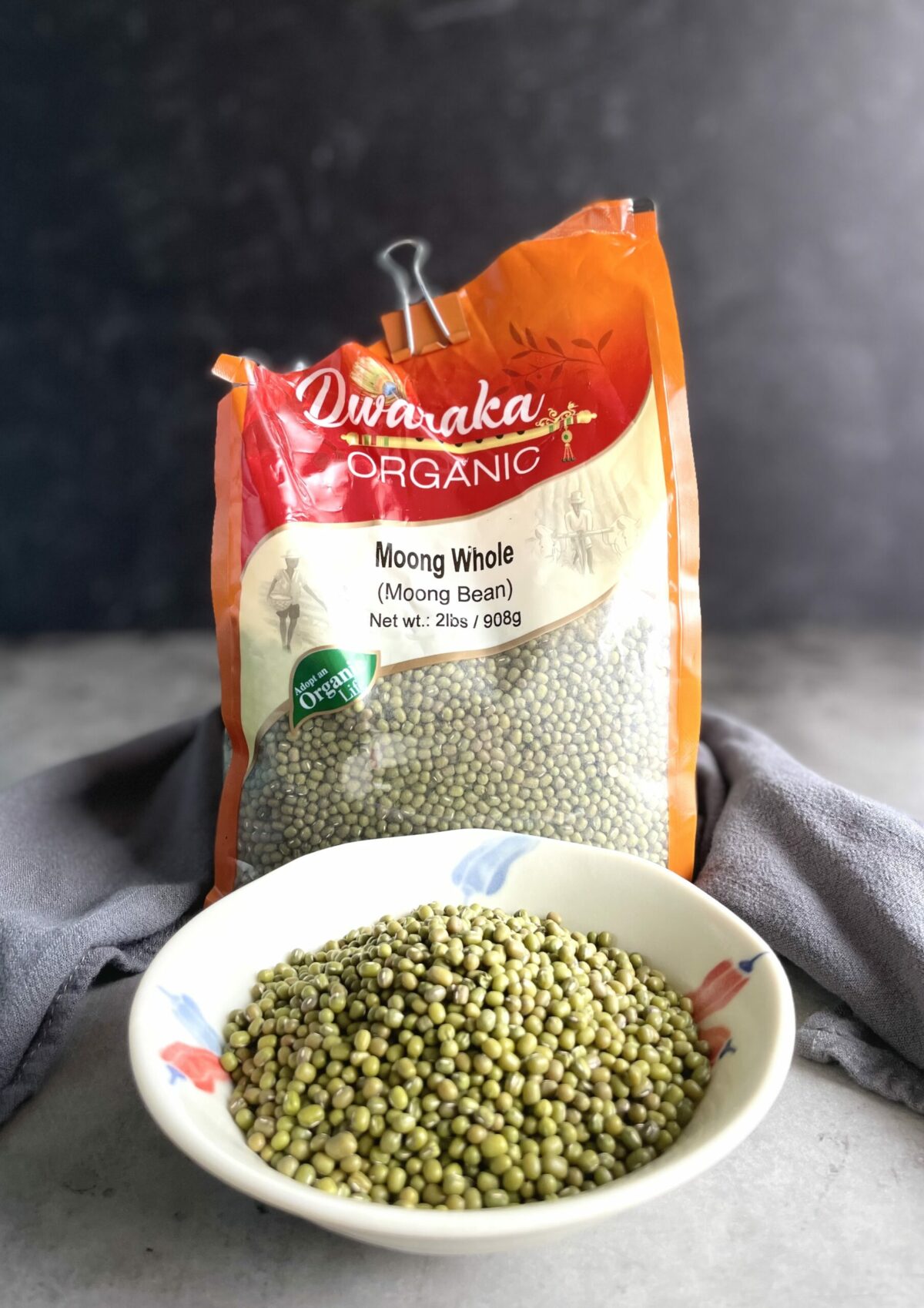
Fun fact: the bean sprouts that you find in health food stores or Chinese markets are derived from mung beans.
Mung beans in different languages
Hindi: Mūng
Tamil: Payaru
Persian: Maash
Mandarin: lǜ dòu
What is split moong dal
Split moong dal are simply mung beans split in halves. They're available with or without skin, or with the husk on or de-husked. The terms split mung beans and split moong dal can be used interchangeably. They are also referred to as split green gram.
Split mung beans = split moong dal = split green gram
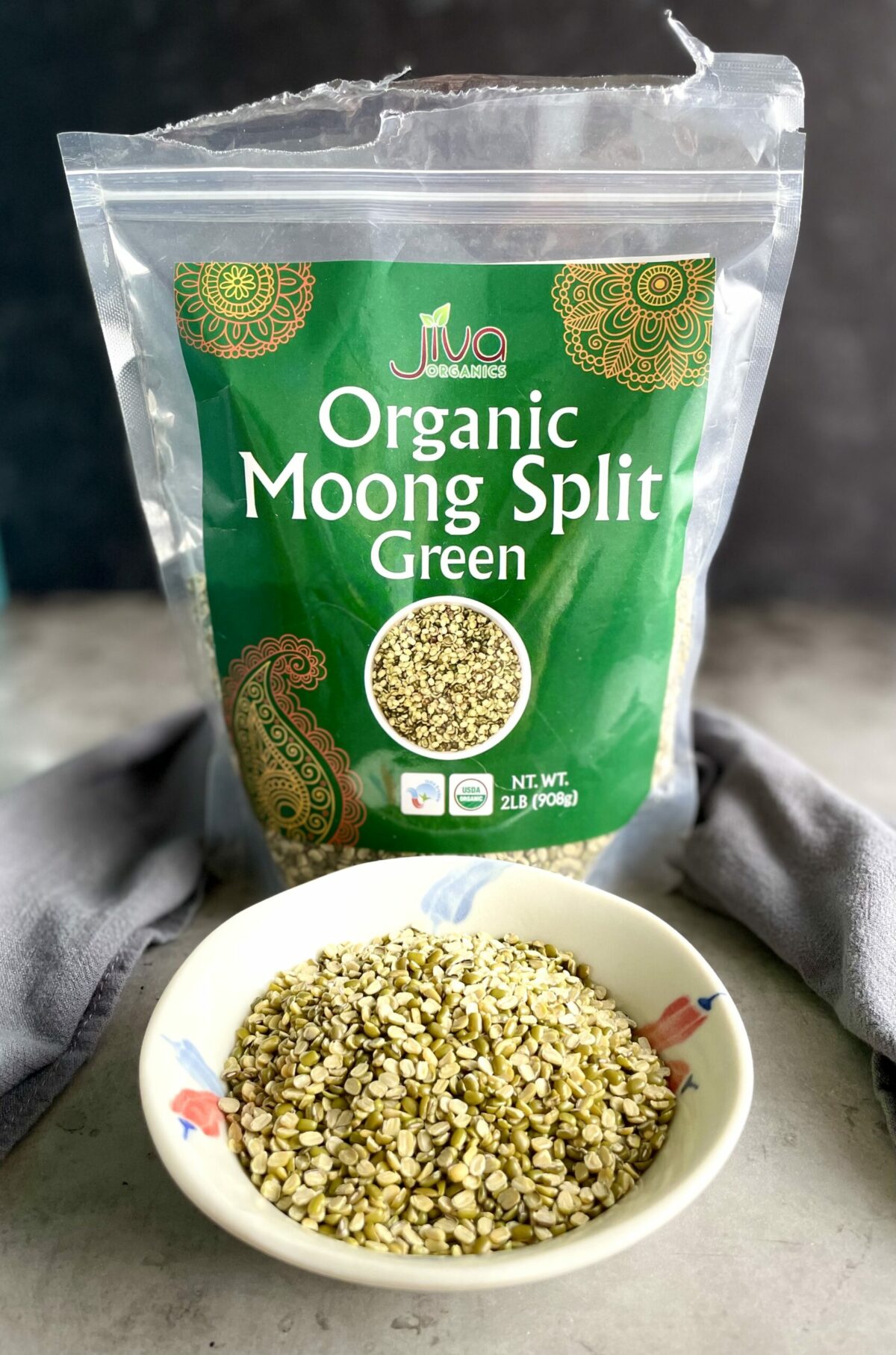
The split version cooks faster than the whole mung beans and similarly to whole mung beans, they are primarily used in stew and soup preparations.
What is yellow moong dal
Yellow moong dal are whole green moong dal beans that have been skinned and split into halves. They're also referred to as yellow mung dal or petite yellow dal. They resemble petite yellow lentils. These split lentils cook very fast, resulting in the most delightful velvety texture, and have a slightly sweet taste.
Yellow moong dal = yellow mung dal = petite yellow dal
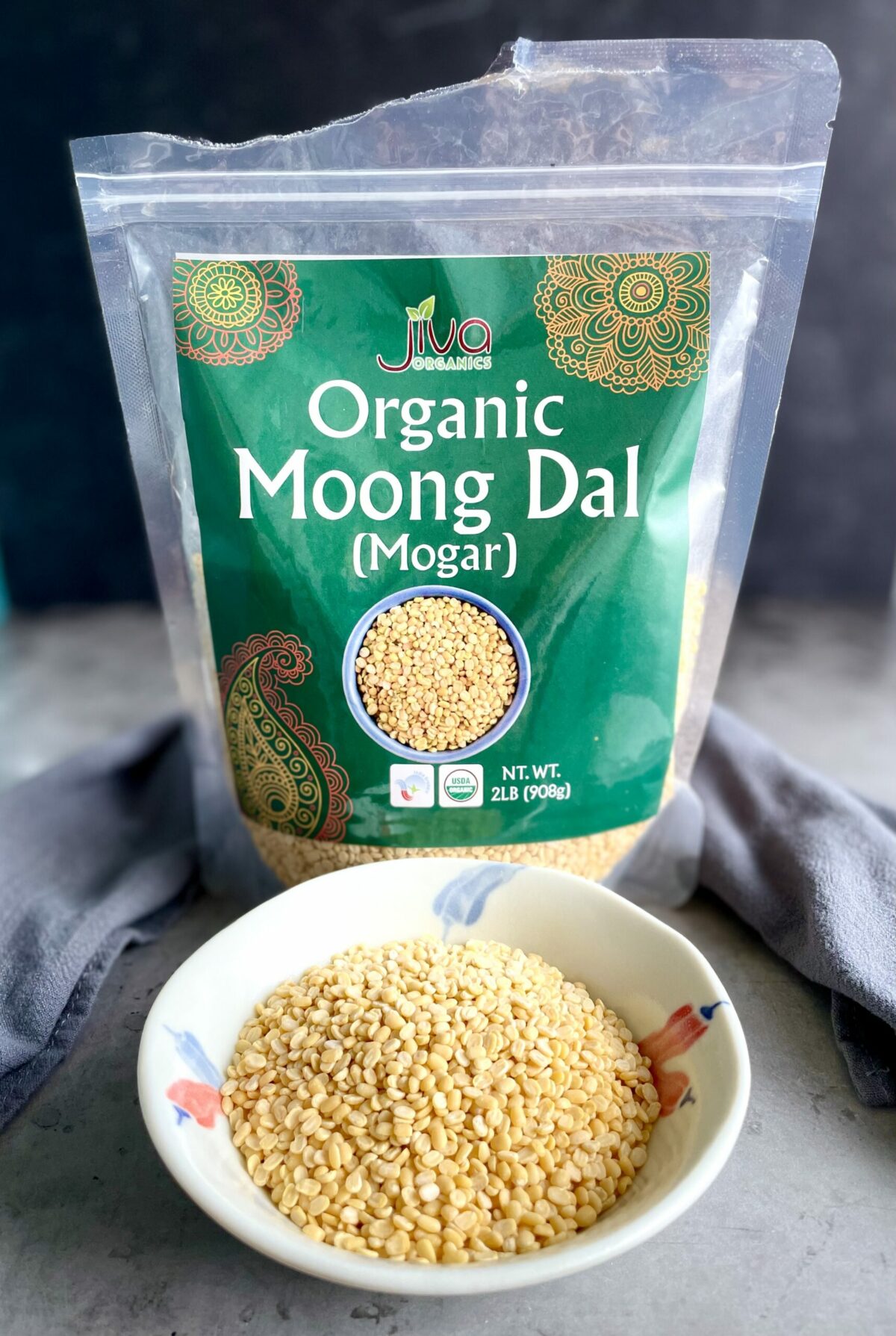
They are sometimes confused with split and skinned urad dal (derived from whole urad dal, or black gram) because they're very similar looking. De-husked and split urad dal are about the same size as yellow moong dal but much paler. See picture below.
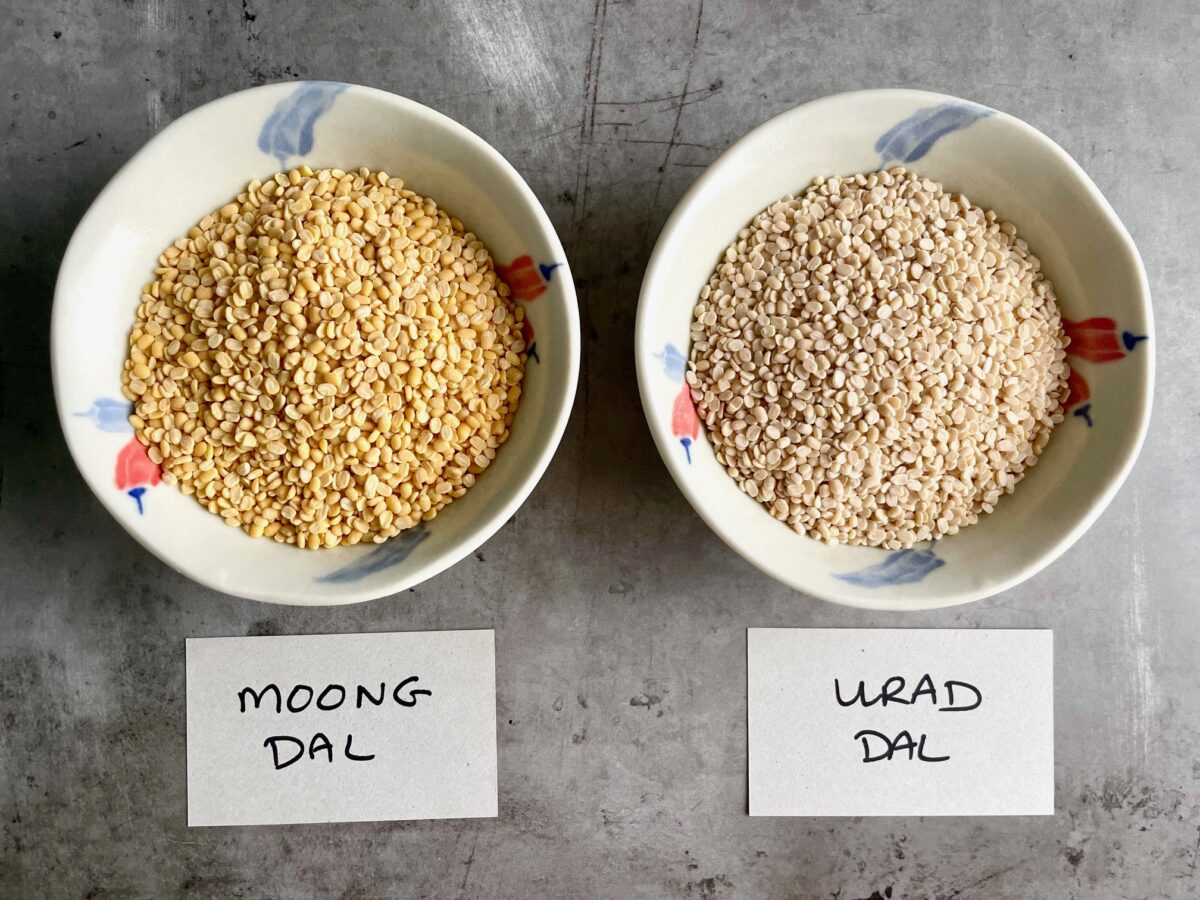
Please note: In this article, we'll refer to the whole mung beans as mung beans, and to the skinned and split mung beans as yellow moong dal.
Health benefits of yellow moong dal or mung beans
Mung beans and their derivatives are excellent for digestive health. A mere 1 cup of cooked moong dal contains 16 grams of dietary fiber, which is 57% of your daily requirement.
They're also rich in essential amino acids, antioxidants, and nutrients that may help reduce blood cholesterol levels (LDL) and lower blood pressure.
Incorporating moong dal in your diet is an excellent choice for those trying to manage their blood sugar levels, as not only are they high in soluble fiber, but they're also packed with protein. They both help in slowing the release of sugar into the bloodstream, preventing sugar spikes.
Mung beans, when sprouted, are even better for digestion. You also boost their nutritional value this way. They're very easy to sprout at home and can be done within a short 24 hours.
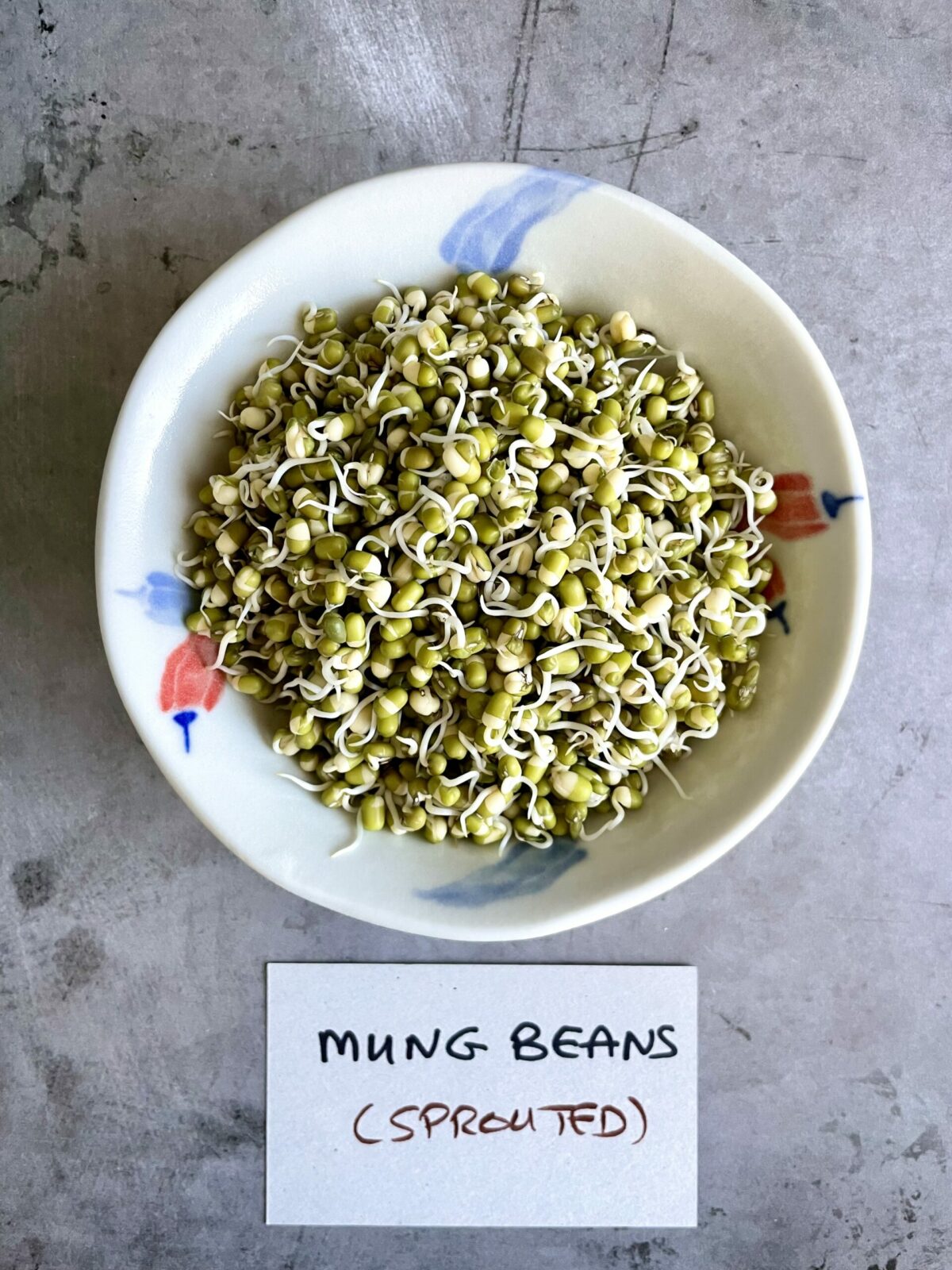
If you'd like to learn more about whether you should incorporate more mung beans to your diet or eat them in moderation, you might enjoy my moong dal benefits and side effects article that goes into greater detail about their nutritional benefits.
How to use mung beans
India
In its Native country of India and other countries like Pakistan, Bangladesh, and Sri Lanka, mung beans are cooked in a pressure cooker and the cooked dal is mixed with a variety of seasonal vegetables and spices.
Mung beans are a very important part of the Indian diet. Eaten together with rice, they form a complete meal, and this is especially important for vegetarians.
Whole mung beans have a bolder flavor than their split yellow counterpart and can be a little chewy due to the skin being intact. This results in you feeling full for longer.
They're commonly used in stews and lentil soup, with or without meat, and are often mixed with other types of legumes like split bengal gram (split chickpeas) or masoor dal (red lentils).
China
In China, mung beans are turned into mung bean noodles which are used in stir-fries and salads. Other names for these are thread noodles, glass noodles, and bean vermicelli. The mung bean noodles are made from mung bean flour or starch and have a very chewy texture.
As previously mentioned, in Asian countries, the mung beans are sprouted and sold as bean sprouts. They are used in salad preparations, in stir-fries, and even as a garnish.
How to use yellow moong dal
In Indian cuisine, yellow moong dal is widely used as an ingredient in both savory and sweet dishes. You can do a similar preparation with your lentils!
Savory uses for yellow moong dal
Kitchari
It's so incredibly easy to digest that moong dal is oftentimes one of a baby's first food in India. Along the same principle, kitchari is a dish based on Ayurvedic principles that is consumed by sick or older people because it's so gentle on the stomach.
Kitchari, or khichdi, is a humble dish of mashed rice, moong dal, and spices that aids digestion: turmeric powder, ginger, and fenugreek (methi). This is India's go-to meal for breakfast, and a nourishing meal for fasting or cleansing days.
Moong dal tadka
Mung beans are also commonly used in a variety of stew-like dishes like the moong dal tadka, which is cooked yellow lentils (or a combination of yellow lentils and toor dal) mixed in with spices & herbs that have been quickly fried in oil or ghee.
A tadka is basically a cooking technique when fat, like oil or ghee, is heated in a small saucepan, and dried spices like cumin seeds, red chili powder, and garam masala are fried on low heat.
You can also add other aromatics like minced garlic, green chilies or, my favorite, curry leaves, to this mix. This tadka mix is added to your cooked moong dal towards the end of cooking. This is the moong dal tadka, beloved all across India.
One of my favorite Indian dal tadka is this typical Bengali Moong Dal that uses mustard oil (common in Bengali cuisine). It's quick and simple to make, and incredibly nourishing.
Moong dal fry
Moong dal fry is another popular way to use this ancient legume. It's an Indian dish where the yellow mung lentils are cooked first, usually in a pressure cooker, then a cooked mixture of onions, tomatoes and spices is added to the cooked lentils. The end result is a smooth, creamy and tasty moong dal.
Sweet uses for yellow moong dal
Mung beans, with their skin removed, has a mildly sweet flavor profile, and don't taste as robust. These skinned mung beans are used in the preparation of Indian treats like sweet kitchari, which is a dessert that combines moong dal, rice, cardamom, raisins, condensed milk and nuts. A delight to the senses and nutritious!
Another favorite sweet concoction of the yellow split mung beans is the moong dal halwa. It's a classic dessert made with yellow moong lentils, sugar or jaggery, ghee, and cardamom powder. The word "halwa" is derived from the Arabic word 'hulw' meaning sweet. Simple but satisfying!
Mung beans vs yellow moong dal table
| Mung beans | Split moong dal | Yellow moong dal |
| Whole bean | Mung bean that has been split into halves, can be with or without skin | Mung bean that has been skinned and split into halves |
| Olive-green in color | Can be part olive-green and part yellow in color or all yellow, in which is it's the yellow moong dal | Yellow in color |
| Cooks in 25 mins on stove top | Cooks in 20 mins on the stove top | Cooks in 15 mins on the stove top |
| Used in savory dishes | Used in savory dishes if with skin on, or savory and sweet if without skin | Used in both sweet and savory dishes |
| Is not usually used in kitchari | Can be used in kitchari | Used in kitchari |

Where to buy mung beans or yellow moong dal
You can buy mung beans and mung bean products from any Indian grocery store or Asian supermarket. They're also available from Amazon.com.
A word of warning if you decided to purchase online though. It's best to purchase them in person because you can check the expiration date, plus it's much cheaper too.
I once made a big shopping trip to a large Indian grocery store that's over 1 hour away and completely forgot to purchase split moong dal. I decided to purchase it from Amazon because I didn't want to make another trip.
When the lentils arrived, it was just a few months away from expiring and harvested over 3 years prior. The problem with old mung beans or dal is they could take a long time to cook, they might even stay hard, and not to mention low on nutrition value.
Mung beans that are over 1 year old will likely not sprout as well if you want to prepare it that way.
How to store mung beans and yellow moong dal
Transfer your mung beans, split moong dal, and moong dal in an airtight container and store in a cool dry place, like a cupboard. These will be good for up to 6 - 12 months.
A final note
Now that you know the nitty gritty about yellow moong dal vs mung beans, why not try my Typical Bengali moong dal recipe or a nourishing side dish like my Easy Sautéed Beetroot Leaves that makes use of urad dal, a dal similar to moong dal.
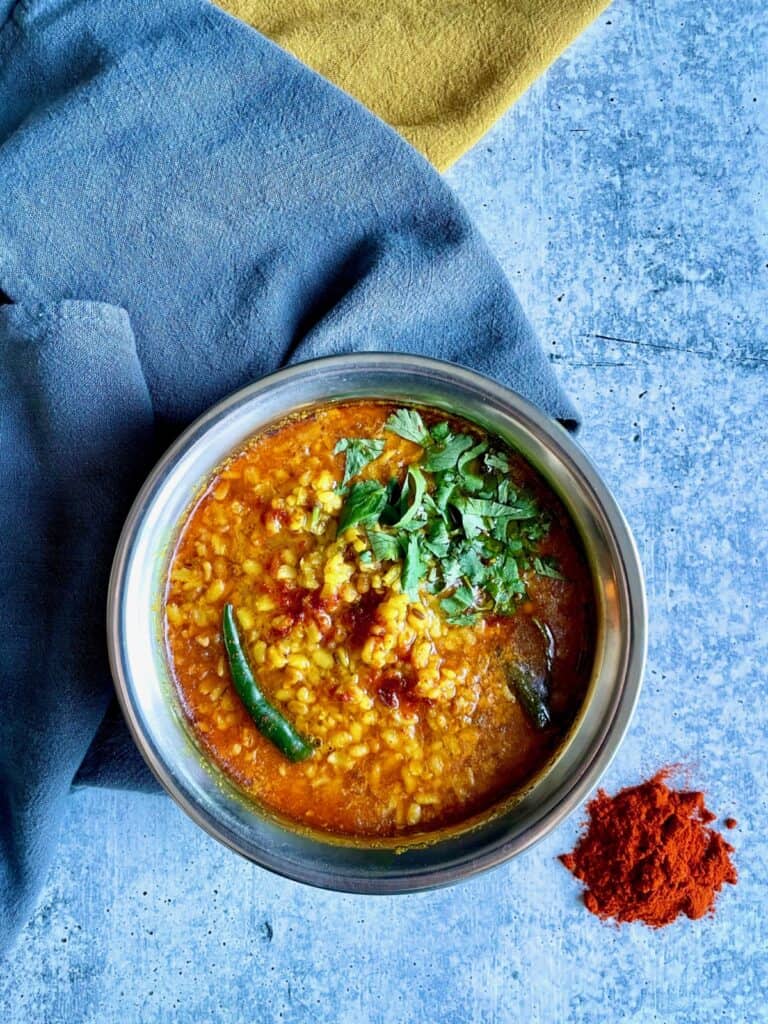
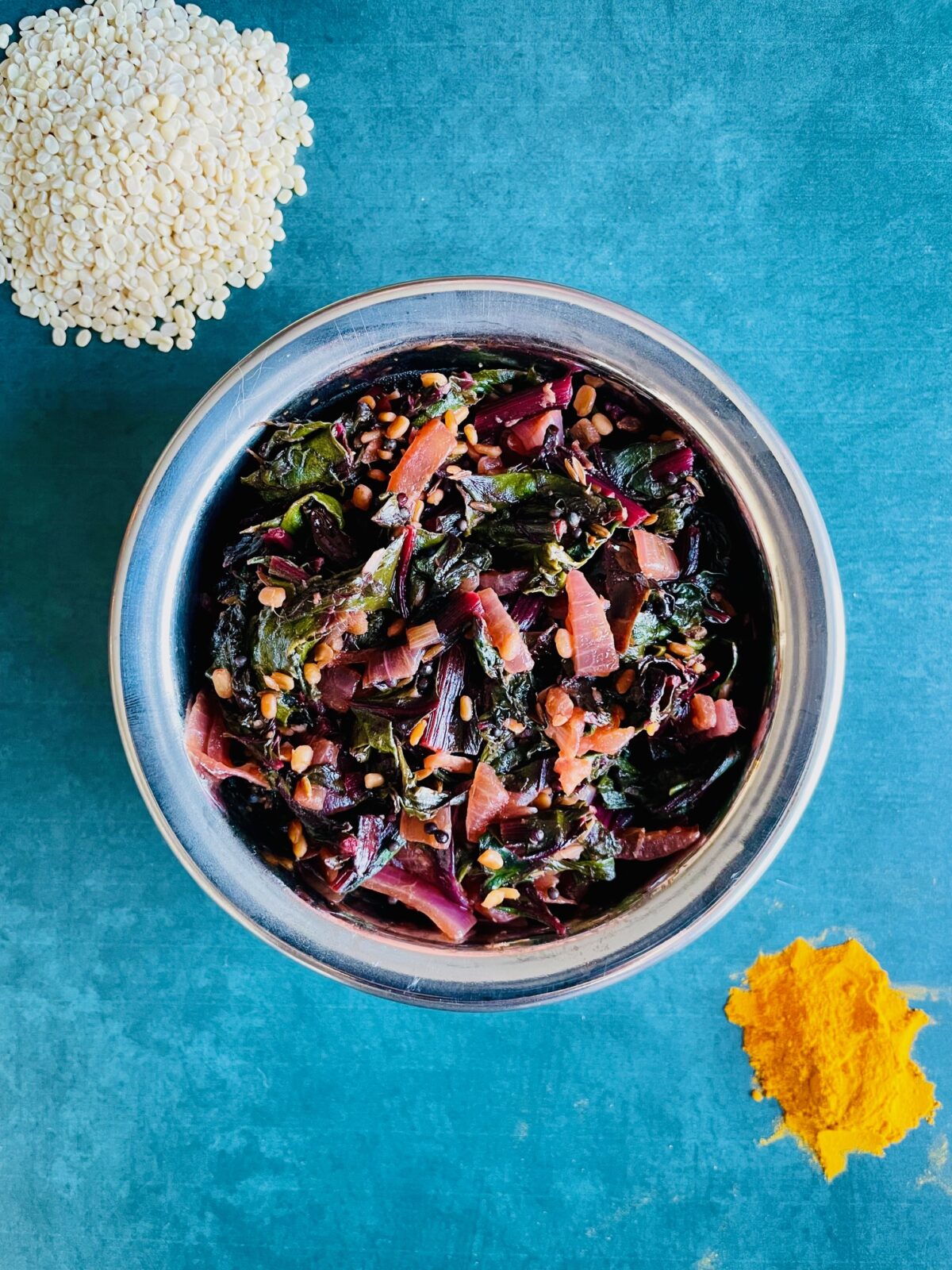
I hope you found this article informative. If you have a yellow moong dal vs mung beans questions that you feel I didn't cover, please leave me a comment below. I would love to hear from you!


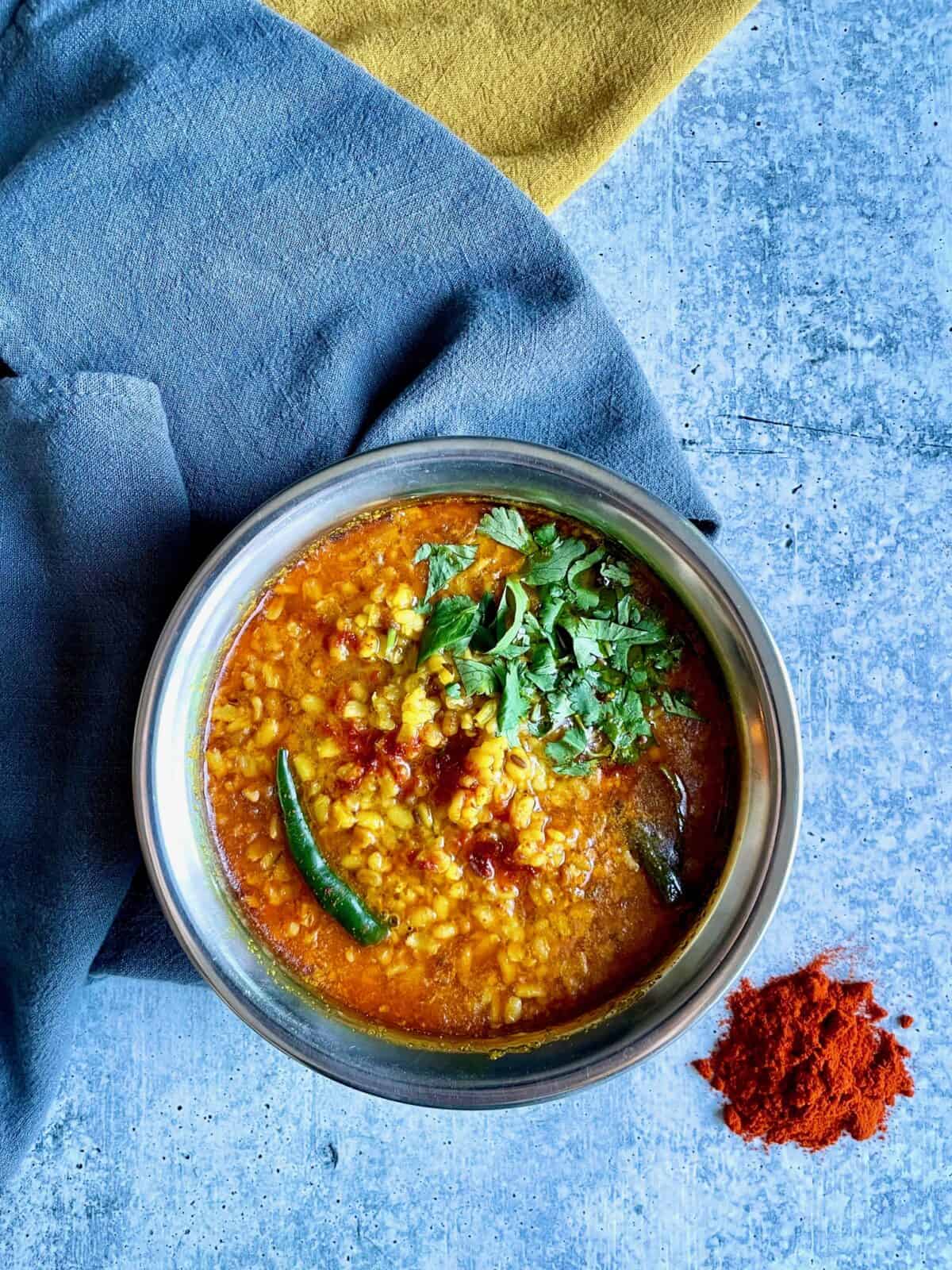
alexandra
very helpful and clearly explained